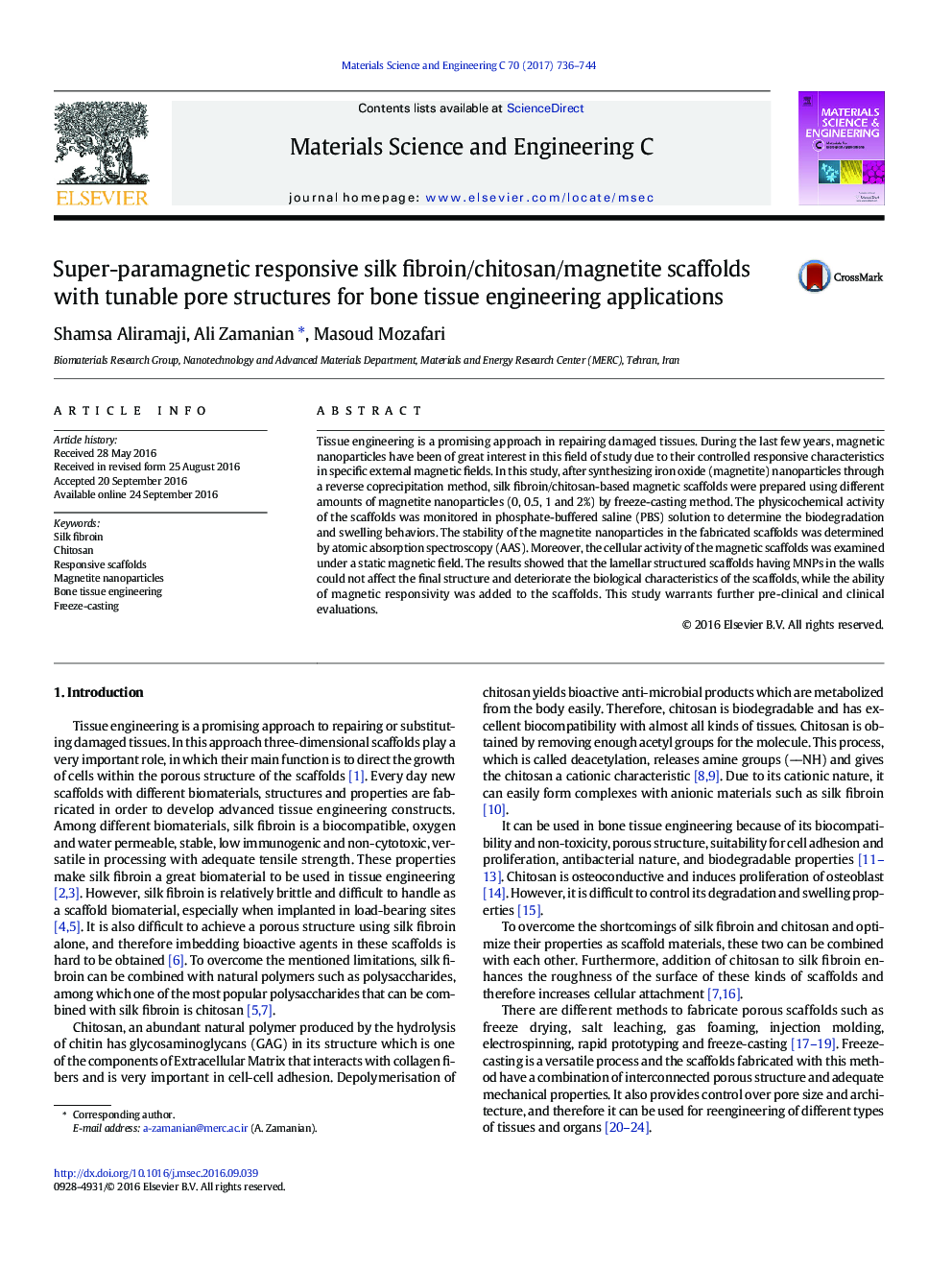| کد مقاله | کد نشریه | سال انتشار | مقاله انگلیسی | نسخه تمام متن |
|---|---|---|---|---|
| 6481417 | 1398100 | 2017 | 9 صفحه PDF | دانلود رایگان |
- Based on TEM micrograph and Rietveld refinement the particle size of MNPs was approximately 12Â nm.
- The water absorption of silk scaffolds increases by the addition of chitosan content.
- Addition of 0.5Â wt% MNPs led to decrease in scaffolds degradation and number of living cells.
- By increasing the MNPs from 0.5 to 1 and 2, the degradation rate and living cells increased.
- In scaffolds with 2Â wt% MNPs cell attachment is slightly better than those of 0.5Â wt%.
Tissue engineering is a promising approach in repairing damaged tissues. During the last few years, magnetic nanoparticles have been of great interest in this field of study due to their controlled responsive characteristics in specific external magnetic fields. In this study, after synthesizing iron oxide (magnetite) nanoparticles through a reverse coprecipitation method, silk fibroin/chitosan-based magnetic scaffolds were prepared using different amounts of magnetite nanoparticles (0, 0.5, 1 and 2%) by freeze-casting method. The physicochemical activity of the scaffolds was monitored in phosphate-buffered saline (PBS) solution to determine the biodegradation and swelling behaviors. The stability of the magnetite nanoparticles in the fabricated scaffolds was determined by atomic absorption spectroscopy (AAS). Moreover, the cellular activity of the magnetic scaffolds was examined under a static magnetic field. The results showed that the lamellar structured scaffolds having MNPs in the walls could not affect the final structure and deteriorate the biological characteristics of the scaffolds, while the ability of magnetic responsivity was added to the scaffolds. This study warrants further pre-clinical and clinical evaluations.
203
Journal: Materials Science and Engineering: C - Volume 70, Part 1, 1 January 2017, Pages 736-744
